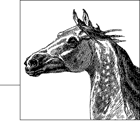Chapter 3. Linux Commands This chapter presents Linux's user, programmer, and system administration commands. These are entered into a shell at the console or on a virtual terminal on a graphical desktop. Each entry is labeled with the command name on the outer edge of the page. The syntax line is followed by a brief description and a list of available options. Many commands come with examples at the end of the entry. If you need only a quick reminder or suggestion about a command, you can skip directly to the examples. Typographic conventions for describing command syntax are listed in the Preface. For help in locating commands, see the index at the back of this book. We've tried to be as thorough as possible in listing options. The basic command information and most options should be correct; however, there are many Linux distributions and many versions of commands. New options are added, and sometimes old options are dropped. You may, therefore, find some differences between the options you find described here and the ones on your system. When there seems to be a discrepancy, check the manpage. For most commands, you can also use the option --help to get a brief usage message. (Even when it isn't a valid option, it will usually result in an "invalid option" error along with the usage message.) Traditionally, commands take single-letter options preceded by a single hyphen, such as -d. A more recent convention allows long options preceded by two hyphens, such as --debug. Often, a feature can be invoked through either the old style or the new style of options. |